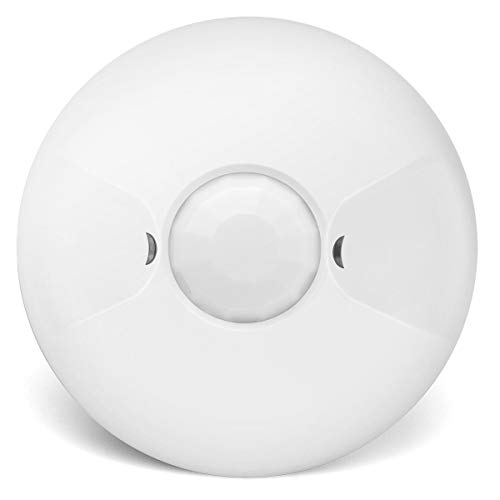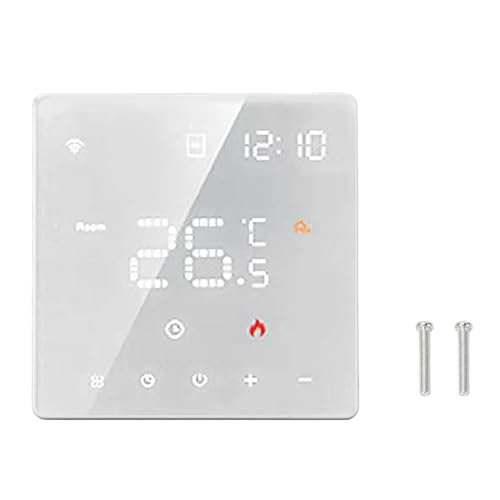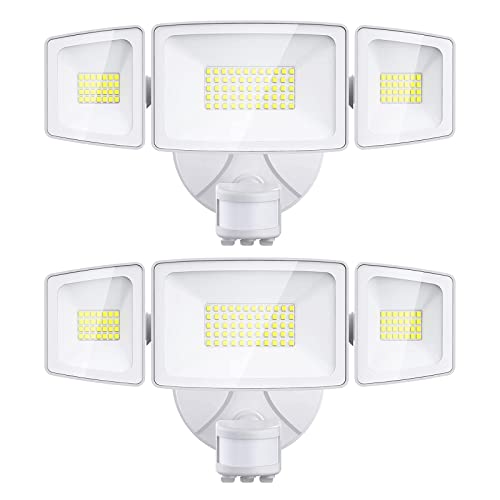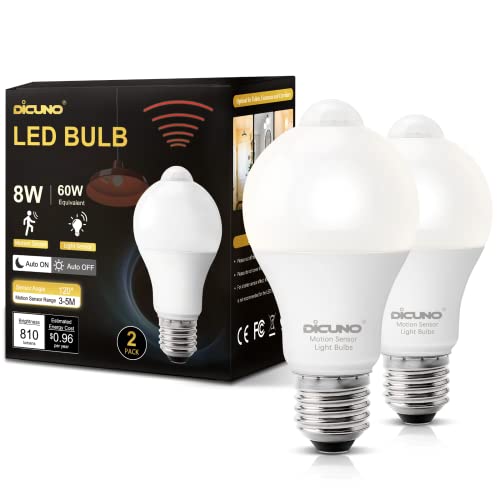10 Best Occupancy Sensor Reviews & Buyer's Guide for 2025
Ahmed Williams Dec 11, 2025 5:55 PM
Occupancy sensors are a great investment for businesses that need to maximize their revenue from the available space. These sensors can be installed into a building’s existing system to detect occupancy levels at various places in the building. The best occupancy sensor will be able to predict the occupancy level of a building and trigger events accordingly such as heating, cooling or even alarms in case of an emergency.
Top Rated
Source: Amazon
Best Coverage: Leviton ODC0S-I1W Self-Contained Ceiling-Mount Occupancy Sensor and Switching Relay
Offers 360-degree detection with up to 530 sq. ft. coverage, adjustable delayed OFF time from 20 seconds to 15 minutes, LED indicator for motion confirmation, and a segmented 79-piece Fresnel lens for precise sensitivity. Indoor use only, supports up to 1000 watts at 120 volts.
Pros:
-
Wide Coverage
-
Adjustable Timer
-
LED Confirmation
-
High Sensitivity
Cons:
-
Indoor Only
-
Limited Wattage
Customers appreciate its reliable motion detection and easy installation, noting that the wide coverage and adjustable timer help optimize energy savings. Some mention it is best suited for standard indoor spaces due to wattage and mounting height limitations.
Best Smart Integration: Lutron Caséta Motion Sensor, Occupancy
Automatically controls any number of Caseta devices with advanced motion detection, 180° field of view, and customizable active hours based on time or sunrise/sunset. Works wirelessly with a 10-year battery life and can be freestanding or wall/corner mounted. Compatible with multiple Caseta switches, dimmers, fan controls, and Serena smart shades within 60 ft.
Pros:
-
Smart Device Control
-
Long Battery Life
-
180° Detection
-
Customizable Settings
Cons:
-
Hub Required
-
Limited to Caseta Ecosystem
Customers value its seamless smart home integration and easy installation, noting that the extended battery life and precise motion sensing make it convenient for frequently used spaces. Some mention it works best when paired with the Caseta hub, limiting flexibility outside the ecosystem.
Best Commercial: Sensor Switch CMR 10 Contractor Select Ceiling Mount
High-performance 360° PIR occupancy sensor with extended 24 ft radial detection, adjustable time delay from 30 seconds to 20 minutes, and self-contained relay for line voltage operation. Easy ceiling installation with included hardware, discreet design, and CSA-certified for safety.
Pros:
-
Large Coverage
-
Adjustable Timer
-
Easy Installation
-
Line Voltage Relay
Cons:
-
Indoor Only
-
Limited Ceiling Height Range
Customers appreciate its reliable performance in commercial settings, noting that the wide coverage and simple installation make it ideal for offices and small rooms. Some mention that it is less flexible for atypical ceiling heights or unconventional layouts.
Best Coverage: ENERLITES Low Voltage Ceiling Sensor Pir Occupancy Motion Detector
360° low-voltage PIR occupancy sensor with up to 1,200 sq. ft. multi-level coverage, adjustable time delay from 5 seconds to 30 minutes, and sensitivity settings from 50% to 100%. Energy-efficient design compatible with incandescent, CFL, and LED lighting, UL/CUL listed and California Title 20/24 compliant.
Pros:
-
Extensive Coverage
-
Adjustable Timer
-
Energy Efficient
-
Multi-Level Detection
Cons:
-
Power Pack Required
-
Indoor Use Only
Customers value its wide detection range and energy-saving performance, making it suitable for commercial or industrial spaces. Some note the need for a separate power pack as a minor inconvenience.
Best Coverage: Leviton ODS10-IDW Decora 120/277-Volt Wall Switch Occupancy Sensor
Wall-mounted PIR occupancy sensor with adjustable 180° horizontal field of view and up to 2,100 sq. ft. coverage. Features manual push-button override, segmented Fresnel lens for high sensitivity, and ambient light override to prevent unnecessary activation. Suitable for commercial-grade 120/277-volt installations.
Pros:
-
Large Coverage
-
Adjustable Field
-
Ambient Light Override
-
Manual Control
Cons:
-
Limited to Wall Mount
-
Indoor Use Only
Customers appreciate its expansive coverage and precise detection, noting that the adjustable field of view and ambient light override help reduce energy waste. Some mention that installation is best suited for standard commercial wall setups.
- 9.4
- BrandENERLITES
- 9.2
- BrandLeviton
- Prime
- 9.0
- BrandELEGRP
- 8.9
- BrandTOPGREENER
- 8.6
- BrandLutron
- Prime
- 8.4
- BrandELEGRP
- 8.2
- BrandECOELER
- Prime
Last update on 2025-12-11 / Affiliate links / Images, Product Titles, and Product Highlights from Amazon Product Advertising API
An occupancy sensor is a device that uses infrared or radio-frequency detection to determine the presence of people. Motion sensors, on the other hand, measure movement and movement patterns.
Which is the most commonly used technology in occupancy sensors?
Smart sensors and occupancy sensors are becoming more and more popular in big companies. They can help to reduce energy consumption, maintenance costs, and prevent accidents due to human error. Most commonly used technology in occupancy sensors is wireless infra-red.
What are the 3 types of occupancy sensors?
There are three types of occupancy sensors: photoelectric, infra-red, and ultrasonic. Each type works in a different way and each has its own pros and cons. Infrared sensors use a light source to detect whether a space is occupied, whereas photoelectric sensors can detect movement by detecting changes in the amount of light they receive. Ultrasonic sensors emit sound waves that bounce off objects and return to their source.
What are the three 3 types occupant detection system sensors?
Occupant detection systems are a group of sensors that are placed within buildings to detect the presence of people in certain locations. The three types of sensors typically used in these devices include pressure, infrared, and acoustic.
Related Posts:
- Best Indoor Motion Sensor Light Reviews & Buyers Guide in 2025
- 10 The Best Smart Motion Sensor We've Tested: Top Best Smart Motion Sensor Reviews
- 2025's Best Motion Sensor For Alexa as Reviewed by Experts: Top-picks for You
- 10 The Best Motion We've Tested: Top Reviews I Smart Home Review
- 2025's Best Motion Light Switch as Reviewed by Experts: Top-picks for You
Choosing the best occupancy sensor comes down to understanding your specific needs, whether it’s energy efficiency, wide coverage, or smart home integration. High-quality sensors can significantly reduce energy waste, enhance convenience, and improve safety in both residential and commercial settings. By considering factors such as detection range, installation type, and compatibility with your existing systems, you can select a device that delivers reliable performance day after day. Investing in the right occupancy sensor not only simplifies daily routines but also provides long-term savings and peace of mind, making it a valuable addition to any space.






























